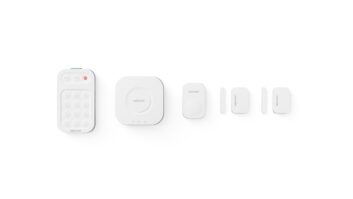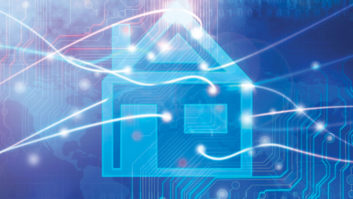This fall, when Apple unveils its 2021 version of the iPhone, the company could also decide to celebrate the 10th birthday of its beloved but vastly under appreciated digital voice assistant, Siri. In some ways, it’s hard to believe that Siri has only been around for 10 years. But in the decade since voice control technology went mainstream with Apple, the space has exploded and improved unlike anything we could’ve imagined way back in October of 2011.
Today, voice commands allow us to not only execute basic smartphone functions, but they’ve given us simple control over some very complex smart home systems. Between Apple, Google and Amazon there are some 100,000 devices available today that are supported by digital voice assistants with more being manufactured and launched every day.
Another perhaps lesser-known company in the voice assistant space is Josh.ai. If you’re a Home Technology Specialists Nationwide (HTSN) member or familiar with the CEDIA Expo, Josh is a name you’ve surely heard before. Where the Big Three excel in basic smart home voice commands, Josh is like the PhD student sitting in on a high school Algebra 1 class. It’s a system that’s capable of handling complex requests with some of the higher-end consumer electronics that Independent retailers often sell to their customers — those massive OLED TVs, motorized shading, integrated lighting systems, security devices and so on.

Josh recently published their list of the top-10 most used voice commands of 2020, which, in all honesty, is probably the most accurate top-10 list they could ever hope to produce thanks to all of the extra time we spent at home last year. The list itself is interesting to look through because it shows how consumers are actively engaging with their digital voice assistants. But there are also quite a few learnings for the retail community as well in there. Namely, it gives smart home dealers an idea of the types of connected products they can package together and the types of demos they can show to customers that have a better chance of resonating, thus increasing their average ticket performance.
To recap, here’s a quick rundown of the most-used voice commands, according to Josh:
- OK Josh, Good Night. Simple command that uses conditional logic to execute a total shutdown of all connected devices, shades to close, etc.
- Turn off the TV (closely followed by ‘Turn on the TV’).
- Turn off the Lights (closely followed by ‘Turn on the Lights’).
- Good Morning. Just the opposite of #1, a simple command that triggers things like devices to turn on, shades to open, music to start playing and more.
- What Time Is It? Because we all definitely lost track of time throughout 2020.
- Close the Shades (closely followed by Open the Shades).
- Goodbye. Similar to Good Night, this alerts the smart home system you’re leaving, so the home shuts down and security systems arm.
- I’m Home. The exact opposite of #7, this will get the home ready for your arrival by raising the thermostat, turning lights on and more.
- What’s the weather? A staple in the voice command space.
- Watch Netflix. Yup, 2020. But this shows where the streaming wars stand.
What stands out first is that 40% of the list is comprised of complex requests, meaning simple phrases that result in a multiple things happening — the Hellos, Good Nights, etc. That represents a major opportunity for retailers to tell that story in your smart home demo area or when consulting with clients. If you show a customer how one simple phrase can change the lighting, control their blinds, adjust their music, lower the temperature and more, you’re increasing the likelihood that they’ll want to add smart shades, smart lighting, et. al., to their home — either in one shot or over time with you. Bottom line, it creates that Wow factor that helps to sell these products and systems. Creating that successful demo or pitch will result in either an increase in the average ticket in your store, or you’ll create a long-lasting relationship with that customer.
Beyond the scene-setting requests, this list from Josh should put a huge smile on the face of consumer tech dealers and custom integrators. Eight out of the 10 spots are dedicated to audio/video products and other connected devices. That means more opportunity for CE and CI dealers to sell, install and set up these products for their customers.
Something else to consider here, the abundance of technology on this list shows an increase in consumers’ familiarity and comfort with using smart home technology. Inherently, voice commands are going to involve controlling things that fall under the consumer tech banner, but one of the major hurdles that has existed with the adoption of smart home technology is education and awareness. Consumers are far less likely to adopt a technology that they’re either not familiar with or perceive as something that will break or is difficult to use. Even with something as simple as a smart light bulb, this market can be intimidating to the average consumer. But this list shows that consumers are moving beyond the more informational requests (‘What was the score of the [insert favorite team] game last night’ or ‘How tall is Shaq’) to more control-based requests.
There’s always going to be a need for education with technology, but seeing a top-10 list like this shows that the industry is improving in that area. And that’s a great thing, because the smart home continues to represent a major $half-trillion opportunity for Independent retailers.
This article originally appeared on the NMG Blog. It is reprinted here with permission from the author.
See also: Half Of U.S. Consumers Own At Least One Smart Home Device, Says NPD Report












